Low-growing, ground-hugging plants ensure that your garden stays vibrant, healthy, and lovely. Evergreen ground cover plants are one of them. Mat-forming, spreading plants offer year-round interest and texture to your yard, as well as limiting weed development and soil erosion on slopes. Evergreen ground cover plants are simple to care for, which is one of their advantages. As a result, they need not be mowed like grass.
Full sun is perfect for many types of ground cover plants. Several of these low-growing plants do not lose their foliage even after bloom each year. Shade tolerant mat-forming evergreen ground cover plants are also suitable. To cover the ground beneath shrubs, trees, or shaded portions of your garden, you may grow shade-loving evergreen plants.
Creeping phlox, candytuft, and evergreen wintercreeper are the best evergreen ground covers for full sun. Because of its bright variegated leaves and tiny white flowers, deadnettle is the finest evergreen ground cover plant for shade. The top selections of evergreen ground cover plants are discussed in this comprehensive guide.
Scientific names and pictures of these evergreen ground covers will help you choose the best ones for your garden, in addition to descriptions.
Advantages of Planting Evergreen Ground Covers
Ground cover plants that grow evergreen have several benefits in any garden. Ground cover plants protect soil against moisture loss, keep weeds at bay, slow soil erosion particularly on slopes, and offer year-round appeal. Evergreen ground cover plants are likewise beneficial because they can thrive in both full sun and shade.
Evergreen Ground Cover Plants for Full Sun (With Pictures)
In sunny spring and summer gardens, planting perennial ground cover plants can create a colorful mat. Full-sun ground cover plants may tolerate some shade as well.
These plants’ spreading habit aids in the yearly covering of bare ground with foliage. Vibrantly-colored blooms are often seen on full-sun ground covers with little upkeep.
Creeping phlox (Phlox subulata)
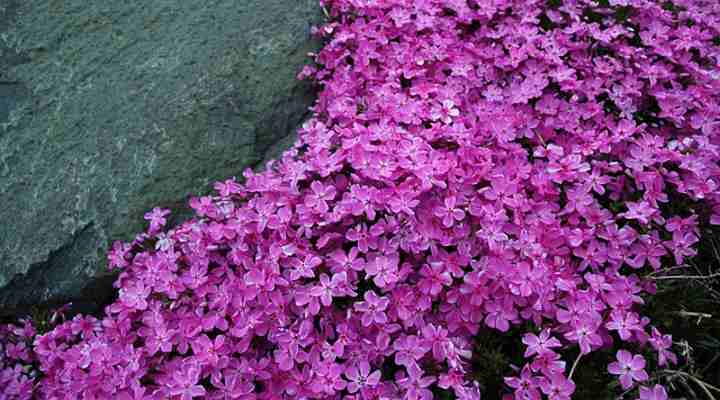
Creeping phlox is a excellent ground cover plant for hillsides and slopes that blooms in the summer. This is a spreading, low-growing evergreen flowering plant that blooms in the summer. In mid to late spring, the mat-forming plant bursts with vibrant colors. To cover bare ground, rock gardens, or flower beds, grow the flowering creeping phlox in full sun.
Purple, white, pink, lilac, and bi-colored creeping phlox blooms may be found. In the spring, clusters of little star-shaped blooms bloom prolifically, creating a colorful carpet. In USDA zones 3 – 9, creeping phlox is a blooming perennial that thrives. It’s also known as moss phlox because of its expanding spread.
Wintercreeper (Euonymus fortunei)
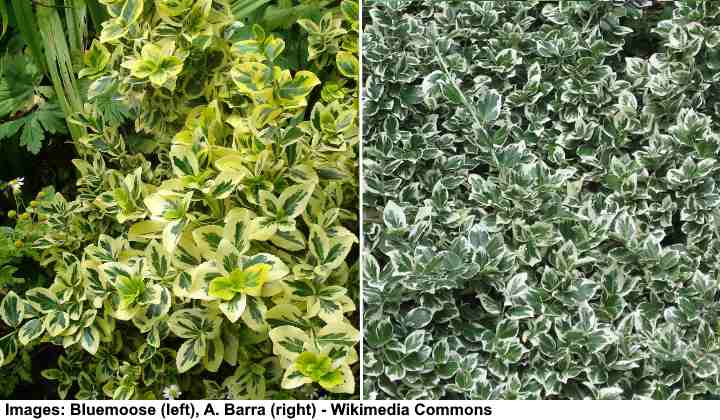
Wintercreeper is a variegated foliage plant that grows as an ornamental perennial ground cover. Euonymus fortunei ‘Emerald’ in Gold is shown on the left. Wintercreeper is a fast-spreading ground-hugging perennial that thrives in the sun and covers bare garden soil. Throughout the year, the evergreen foliage adds beauty to your garden.
Summer gardens are brightened by the variety of variegated wintercreeper plants. On sunny slopes, around borders, or as a low evergreen hedge, plant wintercreeper as ground cover. Wintercreeper is invasive in some areas due to its fast-spreading nature. In zones 5 and 6, grow densely for ground cover in full sun.
Creeping Jenny (Lysimachia nummularia)
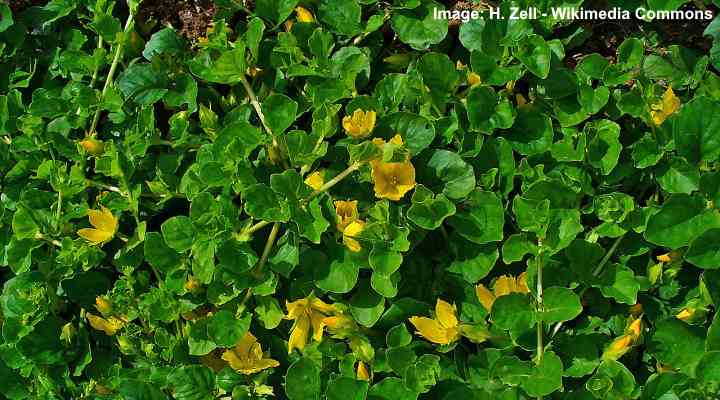
Creeping Jenny is a low-growing ground cover with yellow cup-shaped flowers that grows slowly. The ground is covered with trailing stems and heart-shaped leaves that are vividly colored. Creeping Jenny is a popular ground cover for sunny gardens because it doesn’t grow taller than 6″ (15 cm).
Creeping Jenny thrives in the summer heat with some shade and plenty of water. Creeping Jenny is invasive and should be handled with care when planted in your garden. In zones 3 through 9, plant it in full sun for a year.
Candytuft (Iberis sempervirens)

Candytuft is a fast-spreading evergreen ground cover with a shrubby appearance that blooms in late spring and summer. To protect the soil from weeds and erosion, the spreading perennial quickly grows along the ground. In the borders of garden beds, raised flower beds, or as a cascading plant over the edges of rock gardens, plant this ground cover in full sun or partial shade.
Candytuft is a bushy ground cover that thrives in warmer climates but decays in colder climates. In zones 3 to 9, Candytuft grows year after year.
Mondo grass (Ophiopogon japonicus)

Mondo grass is a variety of low-maintenance grass that comes in several cultivars. Mini mondo grass is seen in the left image. Mondo grass (also known as black mondo grass) is a full sun ground cover that grows well in the image above.
For ground cover, around the edges, beneath shrubs, or to disguise exposed soil, plant Mondo grass. Mondo grass has weed-resistant dense foliage that forms a mat. This is one of its benefits. Mondo grass grows quickly in gardens with little attention. For striking evergreen ground cover, there are various varieties of Mondo grass available.
Black Mondo Grass (Ophiopogon planiscapus Nigrescens)—In warmer climates, this semi-evergreen grass-like plant thrives in full sun. The leaves of the perennial are strikingly purple and almost black. To create stunning color contrasts in a sunny garden, plant next to flowering ground cover plants.
Mini Mondo Grass (Ophipogon japonicus ‘Nana’)—Mondo grasses of this kind develop as little evergreen Blade tufts. Use plants to bring life to gravel gardens, around shrubs, along the edge, on hillsides, or. Mondo grass, when grown like a “no-mow” lawn, is also an excellent choice for maintaining a clean lawn.
Hens and Chicks (Sempervivum tectorum)

Succulents like Hens and Chicks are drought tolerant ground cover plants that work well in sunny areas. A rosette of crimson, green, gray, silvery-green, or pink hues forms a mat of these ground-hugging meaty plants. In rock gardens, edging, borders, and mixed beds, plant Sempervivums as ground cover.
Hens and chicks require a lot of sunlight and little water. Offsets (‘chicks’) develop in the place of these succulents after they have bloomed. In zones 3 to 8, plant these mat-forming plants in full sun.
Angelina Stonecrop (Sedum rupestre Angelina)
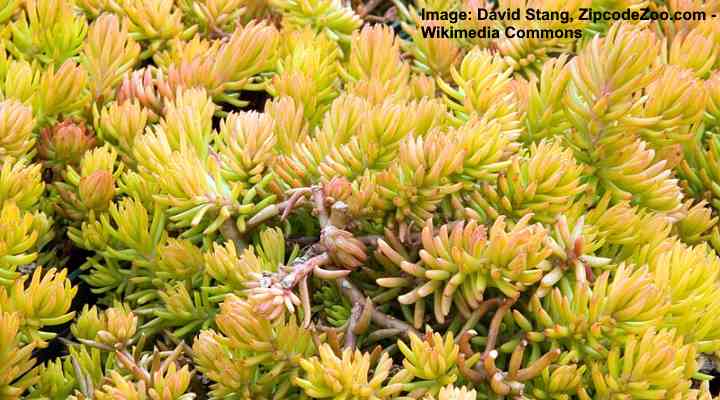
Stonecrop ‘Angelina’ is an evergreen, perennial ground cover plant with succulent foliage that is easy to care for. The needle-like leaves of this Sedum species are vivid in color. Stonecrop is an excellent plant for ground cover because of its spreading nature, low growth, and tolerance of the sun.
With a spread of 24″ (60 cm), stonecrop plants may grow up to 6″ (15 cm). Bring out the color in your stonegarden with growstonecrop. If you don’t have time to care for a garden, stonecrop is a low-maintenance spreading plant that’s ideal. The plant thrives in zones 5 through 9 and is colorful all year.
Creeping Flowering Thyme (Thymus serpyllum)

In mild weather, it forms a carpet of leafy foliage with aromatic little flowers. It is evergreen. In the early to mid-summer, this herbaceous ground cover plant produces tiny pink-purple blooms. For colorful borders, edges, or adding color to rock gardens, flowering thyme is the perfect choice. In areas with mild winters, creeping thyme is an evergreen plant.
The low-care short grass develops up to 3″ (8 cm) and has a spread of 12″ (30 cm) because it is drought tolerant. Creeping thyme is the best choice for zones 4 through 9 if you want a fragranced floral carpet.
Wall Germander (Teucrium chamaedrys)

Wall germander is a spreading, low-growing flowering perennial that thrives in full sun and bears purple blooms. The glossy green aromatic leaves make up the lush foliage. In the summer, when tiny purple blooms emerge, this flowering evergreen ground cover comes to life.
This drought-tolerant plant works well in small-scale ground cover with full sunlight. In a backyard that receives sunlight all day long, grow wall germander wherever you need evergreen cover. As a short hedge, blooming border plant, or edging plant, it’s ideal for planting in zones 5–9.
Rock cotoneaster (Cotoneaster horizontalis)

Some varieties of rock cotoneaster are evergreen shrubs with spreading woody branches that may be used as ground cover in any landscaped garden. Prostate branches that stretch out horizontally and cover the earth distinguish shrubby plants. Rock cotoneaster thrives in dry conditions and grows in full to partial sun.
For year-round appeal, tiny red berries contrast with the glossy green leaves. Cover vast expanses of ground with plant rock cotoneaster. Soil erosion on slopes and banks is also prevented by the strong root system. Between zones 5 and 8, rock cotoneaster thrives.
Bearberry (Arctostaphylos uva-ursi)

In frigid regions, bearberry is a tough low-maintenance ground cover with crimson berries. In the summer, its green leaves are glossy and leathery, while in the winter, they are crimson. In the spring, clusters of dangling white blooms dangle from the evergreen foliage.
The stems lie on the ground forming a rich carpet. Berry thrives in poor soil and is drought-tolerant, growing in full sun to partial shade. For planting where no other plants will grow, one of the best ground covers is buckeyes. Zones 2 through 6 will appreciate this.
Siberian cypress (Microbiota decussata)

The Siberian cypress is a full sun ground cover that grows low and can tolerate shady locations in your yard throughout cold winters. The spreading feathery leaves of this dwarf conifer plant create an evergreen mat.
Low-maintenance short cypress is suitable for ground cover on hills, slopes, banks, and rock gardens, and can grow to a height of 18″ (45 cm). Even in harsh winters, this dwarf conifer remains green. In zones 3 to 7, grow in full sun or partial shade.
Creeping Juniper (Juniperus horizontalis)

Creeping juniper is a superb ground cover plant because of its beautiful leaves. Spreading, ground-hugging shrubby stems with thick foliage make up this needled evergreen ground cover. With a spread of 8 feet (2.4 meters), this slowly growing mat-forming plant grows up to 18 inches (45 centimeters) tall.
To avoid soil erosion or create a carpet of soft evergreen foliage in low-maintenance gardens, grow creeping juniper on slopes as a ground cover. In zones 3 through 9, creeping juniper thrives.
Honeysuckle (Lonicera)

In sunny locations, honeysuckles may be cultivated as flowering ground cover plants or climbers. Huneysuckles come in a variety of evergreen forms, but during a cold winter, some of the foliage may disappear. Honeysuckles thrive in full sun as well as ground cover, despite their popularity as blooming vines.
From early summer until late autumn, the spreading vines bloom. In zones 4 to 8, honeysuckles are ideal for cultivation.
Evergreen Ground Cover Plants for Shade
The shade or partial sun is ideal for many spreading, evergreen ground-hugging plants. Plantings beneath trees or shrubs may be enhanced with growing shade-loving ground cover plants. If you have a north-facing garden, the shade tolerant plants for ground cover are also ideal.
Bugleweed (Ajuga reptans)
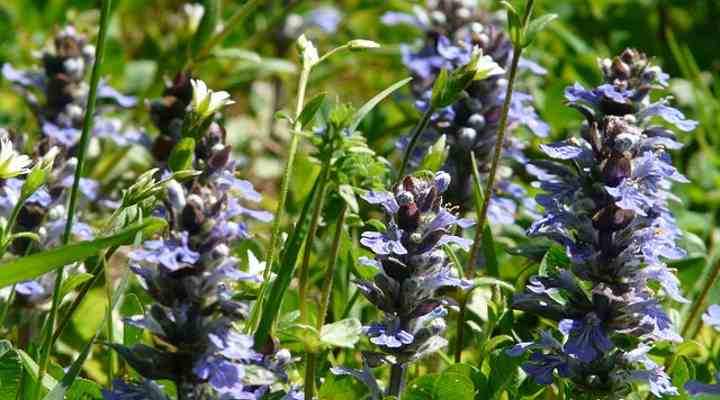
This mat-forming blooming evergreen is ideal for colorful ground cover, and it’s easy to grow as a perennial. Bugleweed is a shade-loving blooming plant that tolerates some sun despite its ground cover. This ground cover develops tiny flowers on spikes in the colors pink, white, blue, or purple in late spring.
Bugleweed is lovely in shaded gardens throughout the year because of its evergreen perennial foliage. Wherever you need to grow ground-covering plants that other plants can’t, grow in zones 3–10.
Periwinkle (Vinca)

Periwinkle (also known as myrtle or creeping myrtle) is a popular flowering ground cover because of its evergreen foliage and dense growth. Periwinkles spread along the ground with prostrate stems that root as they go. In the spring and summer, the thick carpet of lucent leaves produces purple blooms.
Variegated Vinca cultivars are recommended for vividly colored ground cover. To avoid soil erosion, protect large areas of exposed earth, or plant beneath shrubs and trees with periwinkle ground covers. Periwinkles flower best in full sun, despite their shade-loving reputation. Perfect for growing ground cover in zones 6 through 11.
Lilyturf (Liriope muscari)
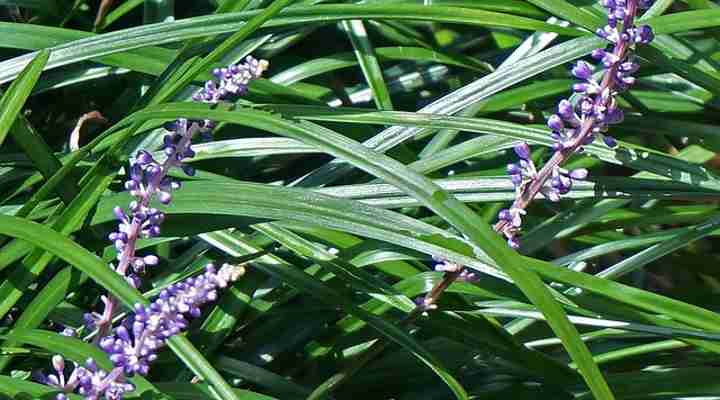
Evergreen lilyturf may spread quickly to suffocate weeds when in bloom. Lilyturf produces densely packed clusters of thin arching leaves that grow as a perennial. As a lawn grass alternative or to plant beneath trees, this evergreen ground cover is also fantastic. Lilyturf thrives in the shade and produces colorful ground cover all year. In zones 5 – 10, lilyturf may also be used as a ground cover plant.
Spotted Deadnettle (Lamium Maculatum)
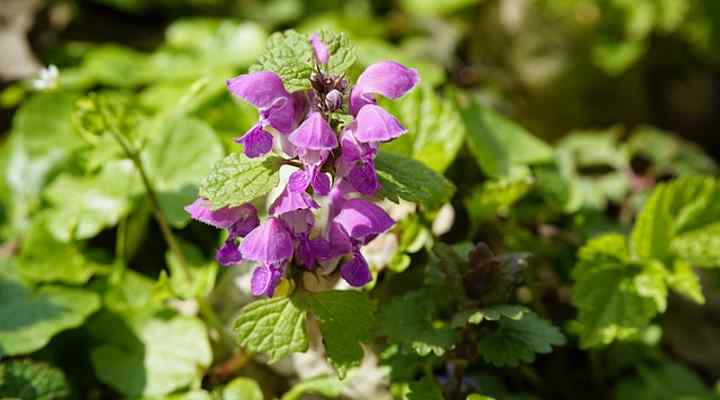
In damp and shady locations, spotted deadnettle is a fast growing ground cover. Green or variegated foliage and long-blooming blooms make this evergreen perennial plant attractive. From spring until late summer, the fast-growing spreading plant produces pink, magenta, or white flowers.
Ground cover of spotted deadnettle grows to 8 inches (20 cm) and has a 3-foot (1-meter) spread. In mild climates, spotted deadnettle is an evergreen ground cover. To conceal barren ground for simple care and upkeep, plant the perennial in shaded sections of your yard. In constant shade, deadnettle is an excellent plant for growing beneath shrubs, trees, or other garden areas.
Japanese Spurge (Pachysandra terminalis)
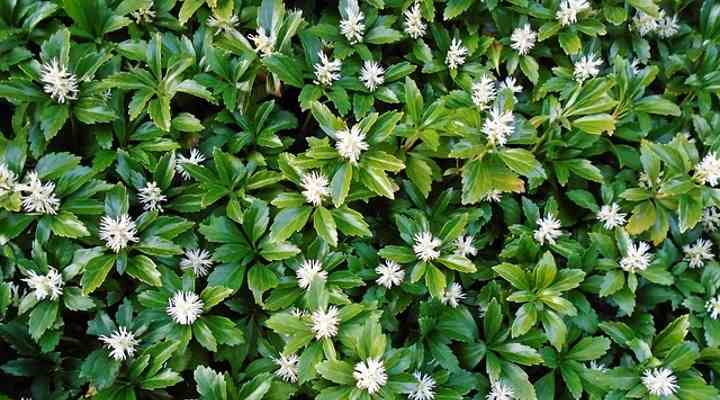
In the garden, Japanese spurge is used as a ground cover or accent plant. Planting ground cover on banks, hillsides, beneath huge shrubs, or protecting soil from erosion or weeds is ideal for the hardy fast-spreading leafy plant. For optimum performance, plant Japanese spurge in full or partial shade.
With a spread of 8” (20 cm), this low-growing plant only grows to 4″ (10 cm) tall. The white flower spikes that bloom in early spring are another bonus of growing Japanese spurge. In zones 4 through 8, plant it as a groundcover.
Coral Bells (Heuchera)

Coral bells is a semi-evergreen perennial ground-hugging plant with lovely vivid foliage that comes in a variety of cultivars. Coral bells are a low-growth plant that is ideal for shade and full sun as a ground cover plant. Borders, shaded areas, rock gardens, and woodland areas are all improved by the red, yellow, burgundy, or silvery-colored leaves.
Coral bells, once grown and distributed, need little attention to continue developing and spreading. In zones 4 through 9, coral bells are hardy perennials.
Sweet Woodruff (Galium Odoratum)

Sweet woodruff thrives in shady gardens with scented foliage. Soft-emerald green leaves and clusters of dainty star-shaped white flowers make this attractive ground cover plant stand out. The plant rises to 6 inches (15 cm) tall and 12 inches (30 cm) wide.
Sweet woodruff may be used to line the ground in shaded gardens, beneath shrubs, or as a lovely edge plant. The lovely smells from sweet woodruff’s leaves are one benefit of cultivating it as a ground cover plant. In zones 4 through 8, sweet woodruff is the most successful.
Fast Growing (Fast Spreading) Evergreen Ground Cover Plants
Evergreen plants that spread quickly over large areas of land are ideal for ground cover. Wintercreepers, candytuft, flowering creeping phlox, and creeping jenny are some of the best fast-growing mat-forming plants for full sun. Spotted deadnettle and lilyturf are two fast growing ground cover options for shade if you’re looking for one.
Flowering Evergreen Ground Covers
In sunny or shaded gardens, flowering evergreen plants for ground cover create colorful floral carpets. Creeping phlox, flowering creeping thyme, and trailing periwinkles are ideal choices for stunning ground-hugging full sun plants. Lilyturf and bugleweed are two of the nicest evergreen flowering ground cover plants for shade.
